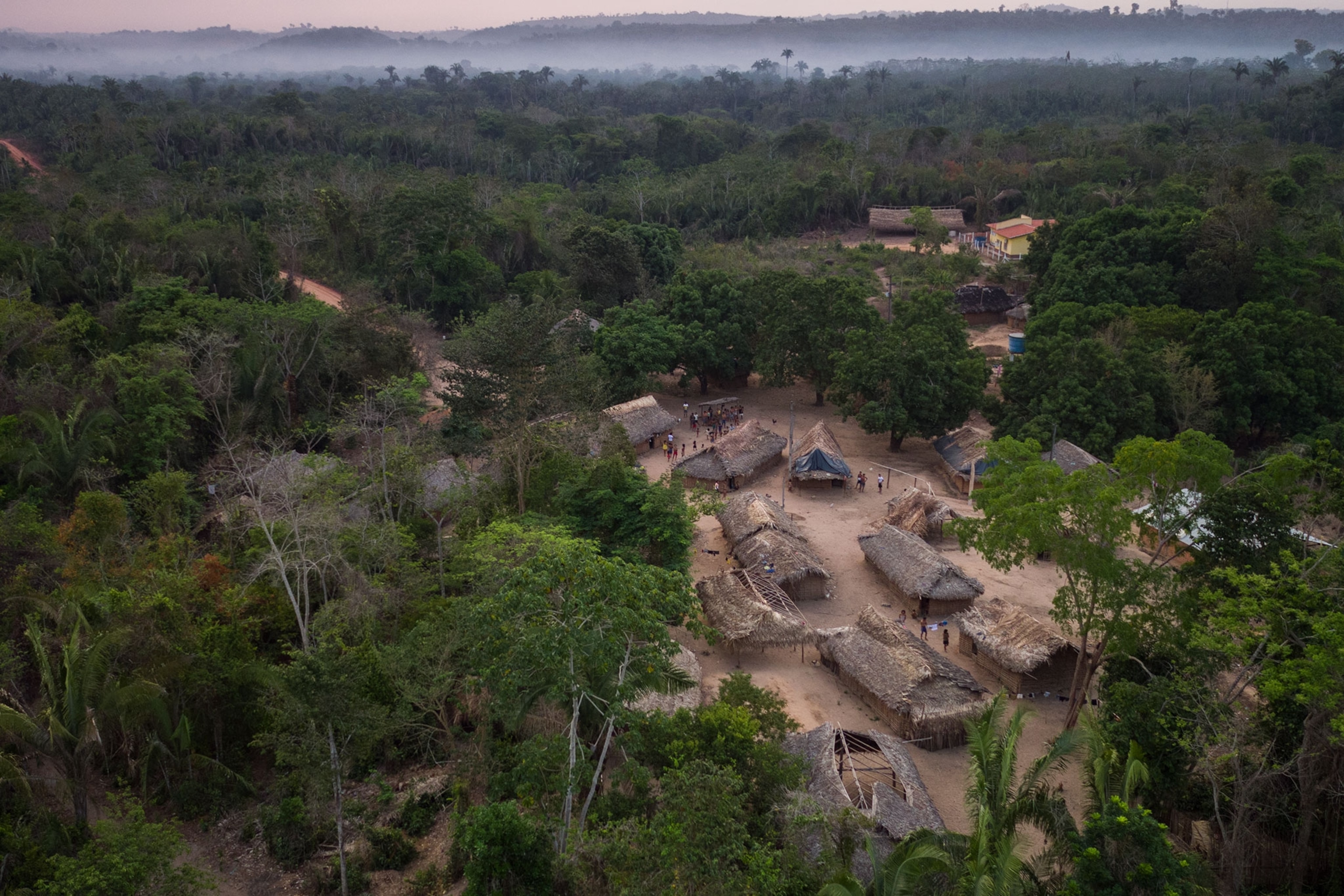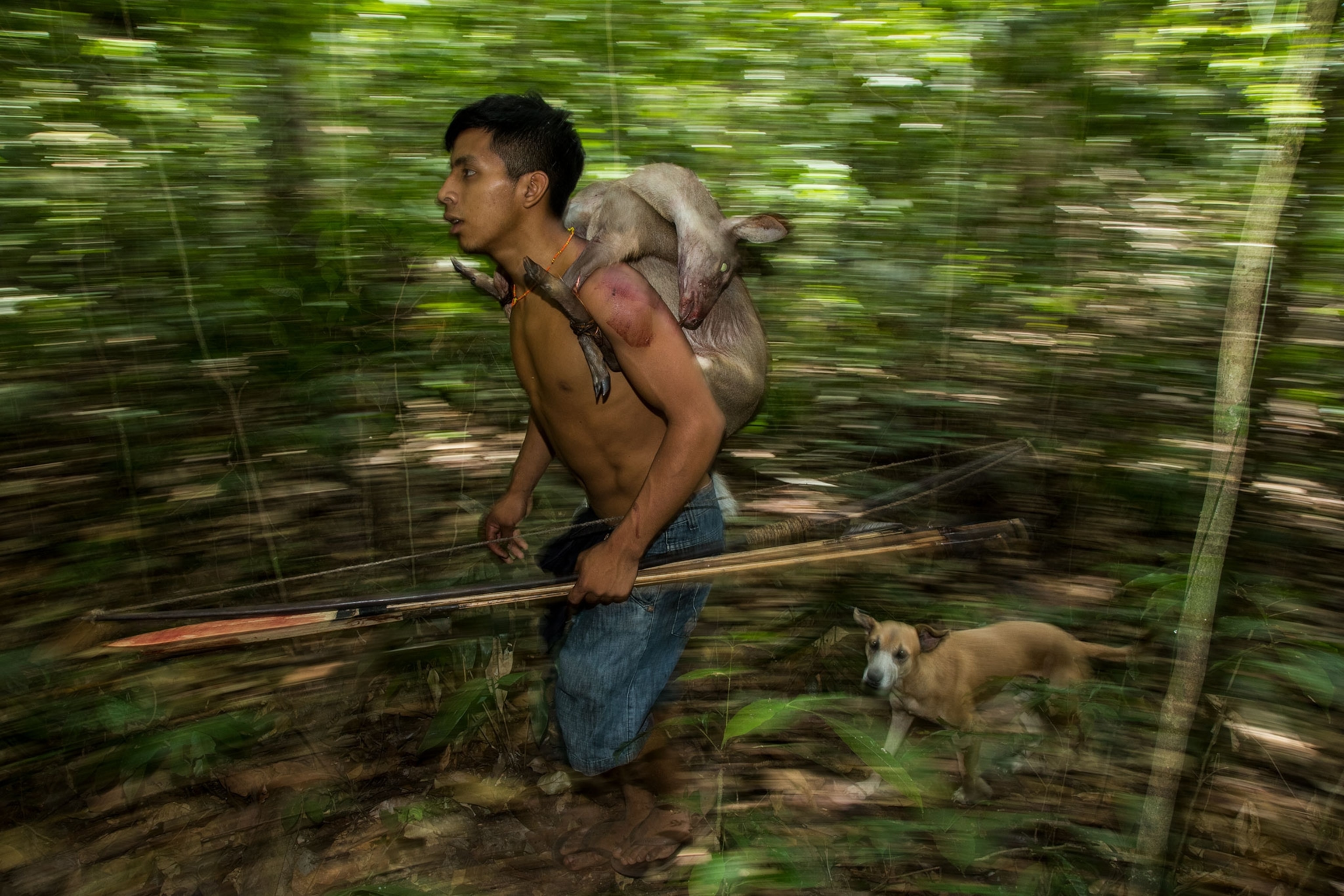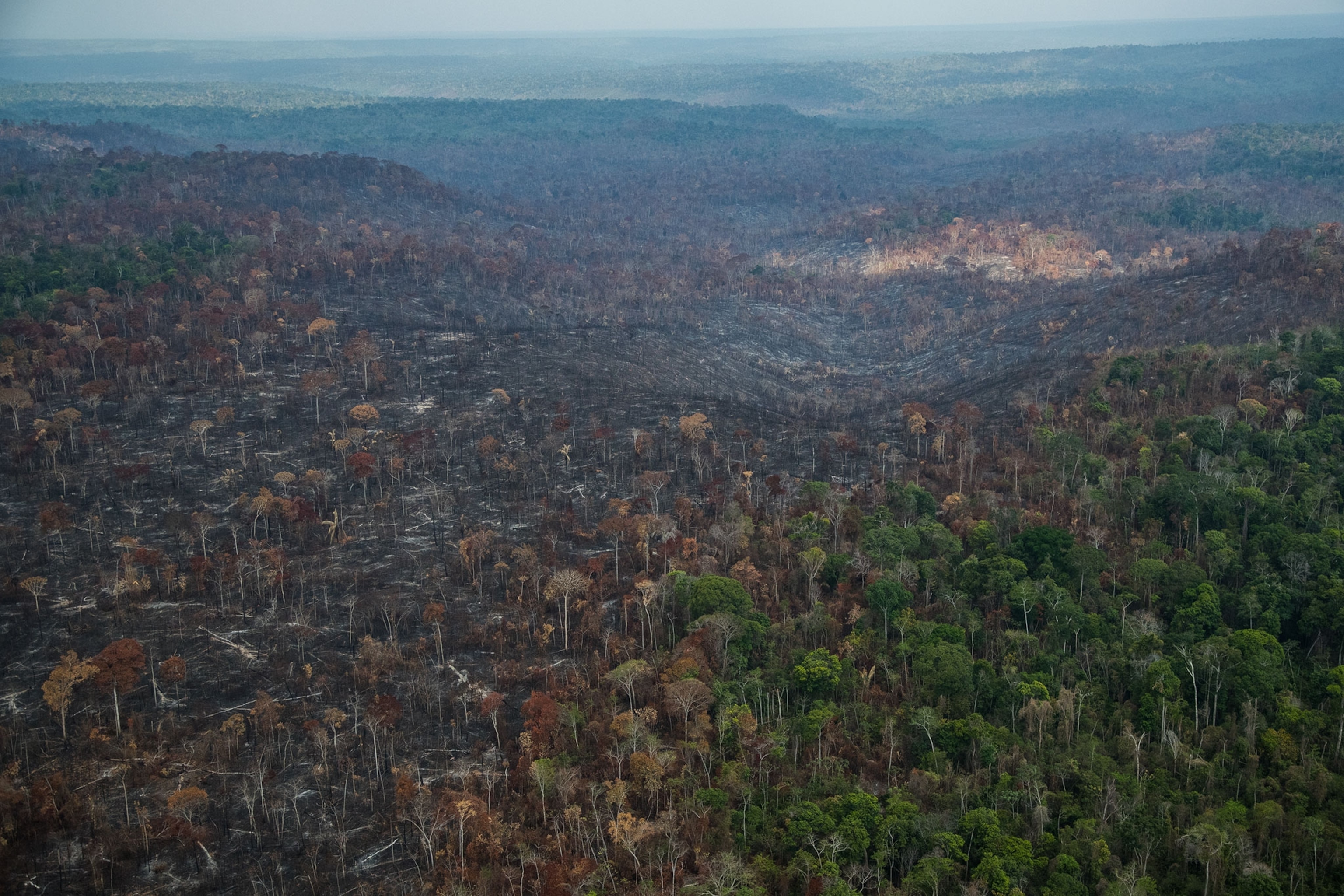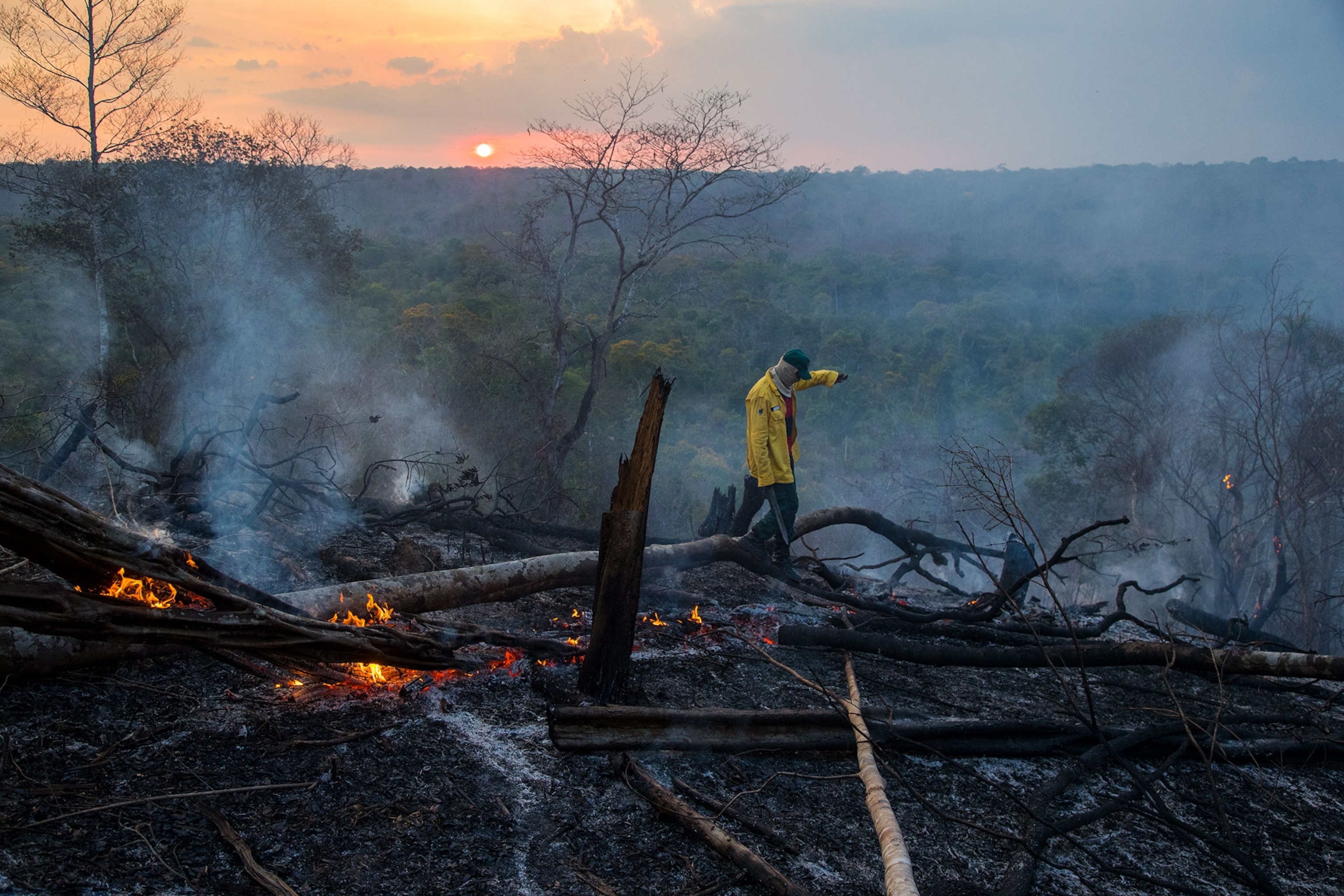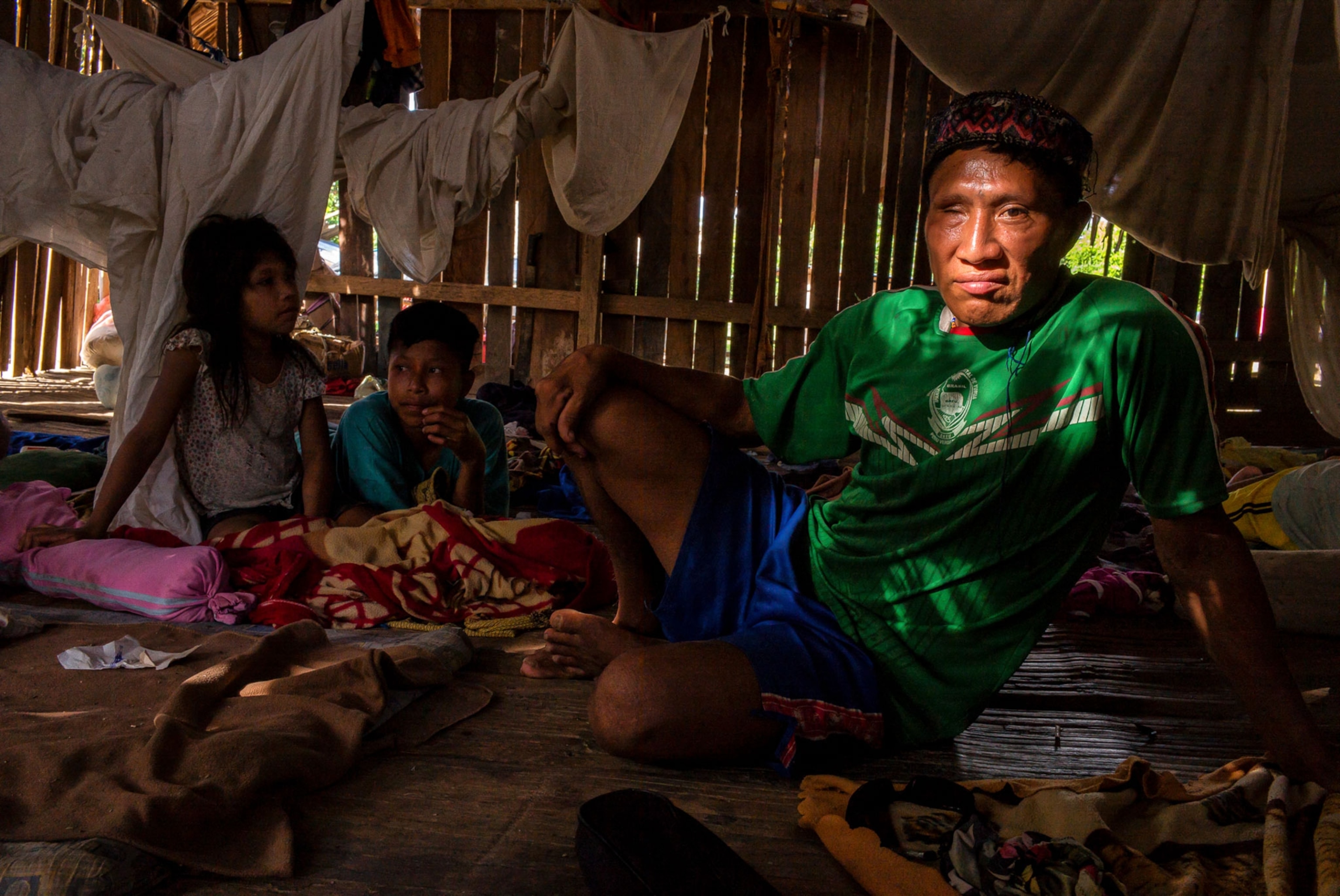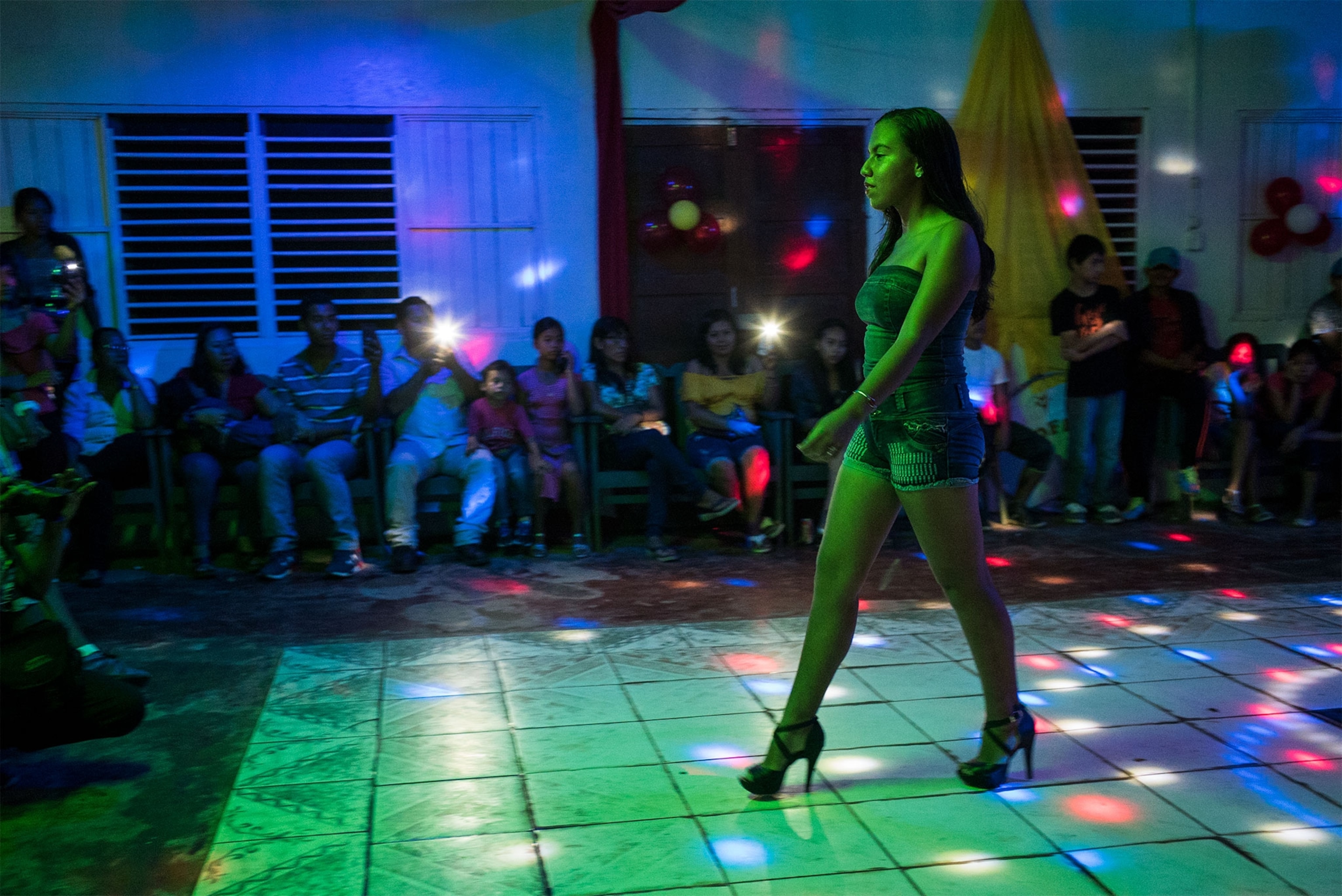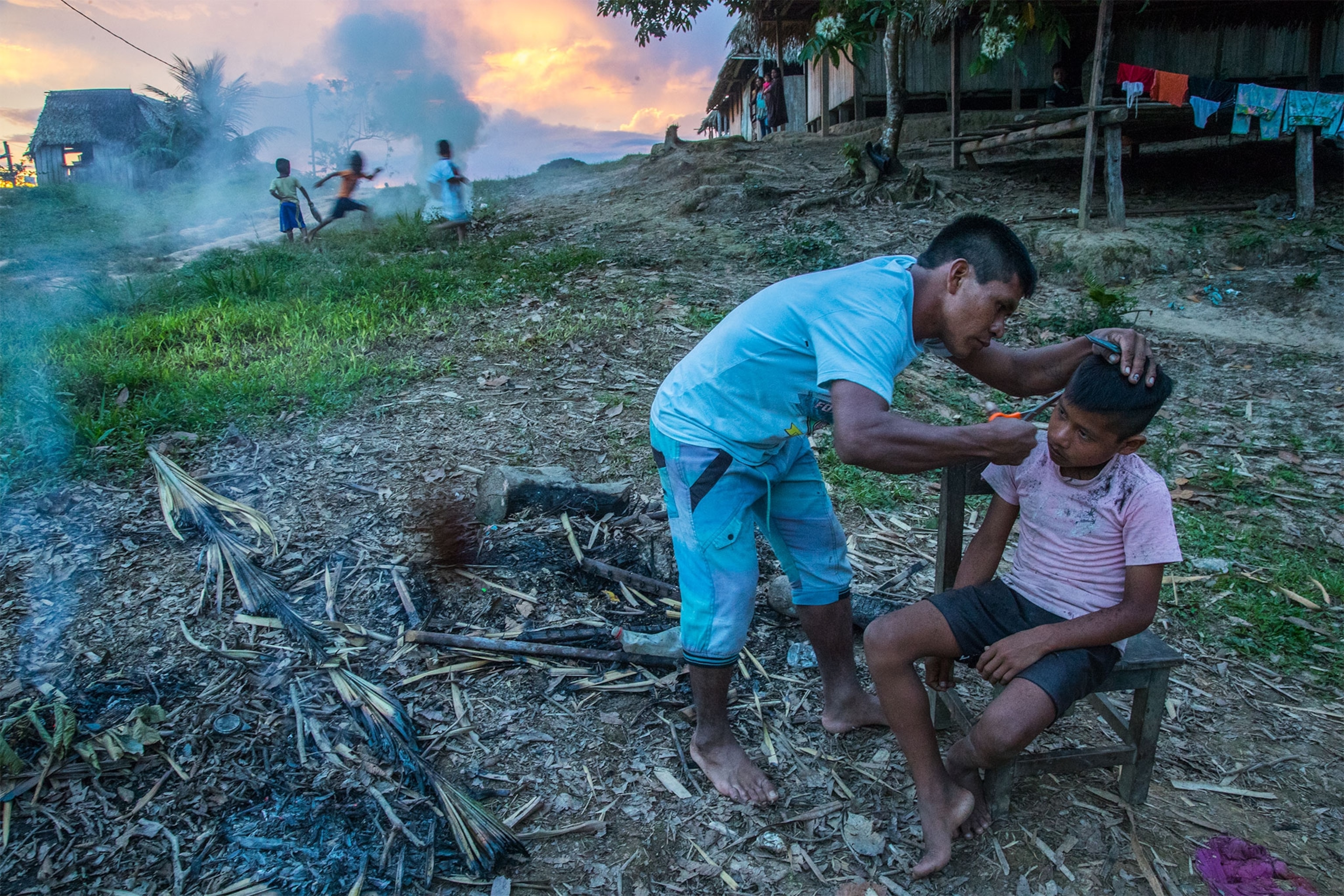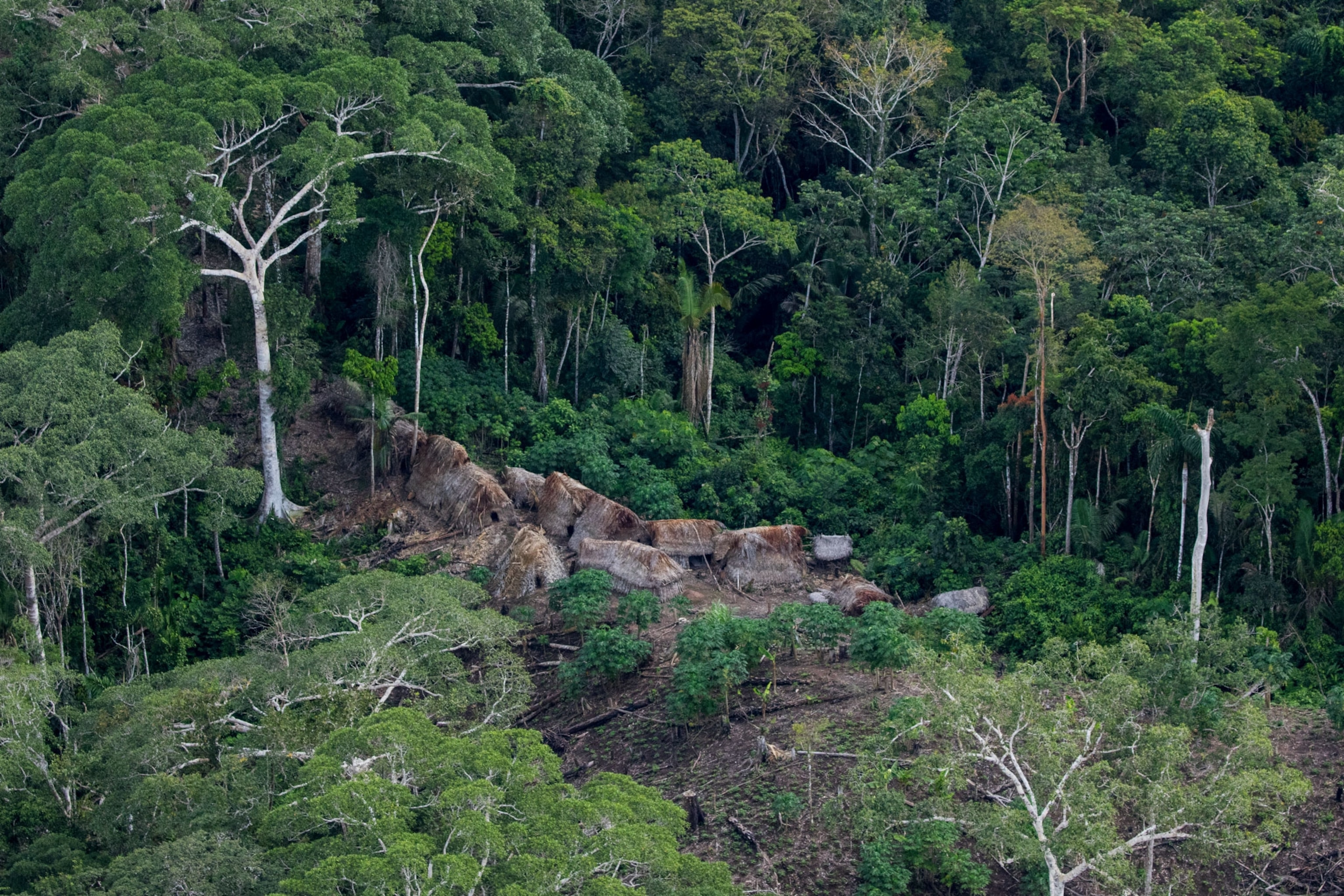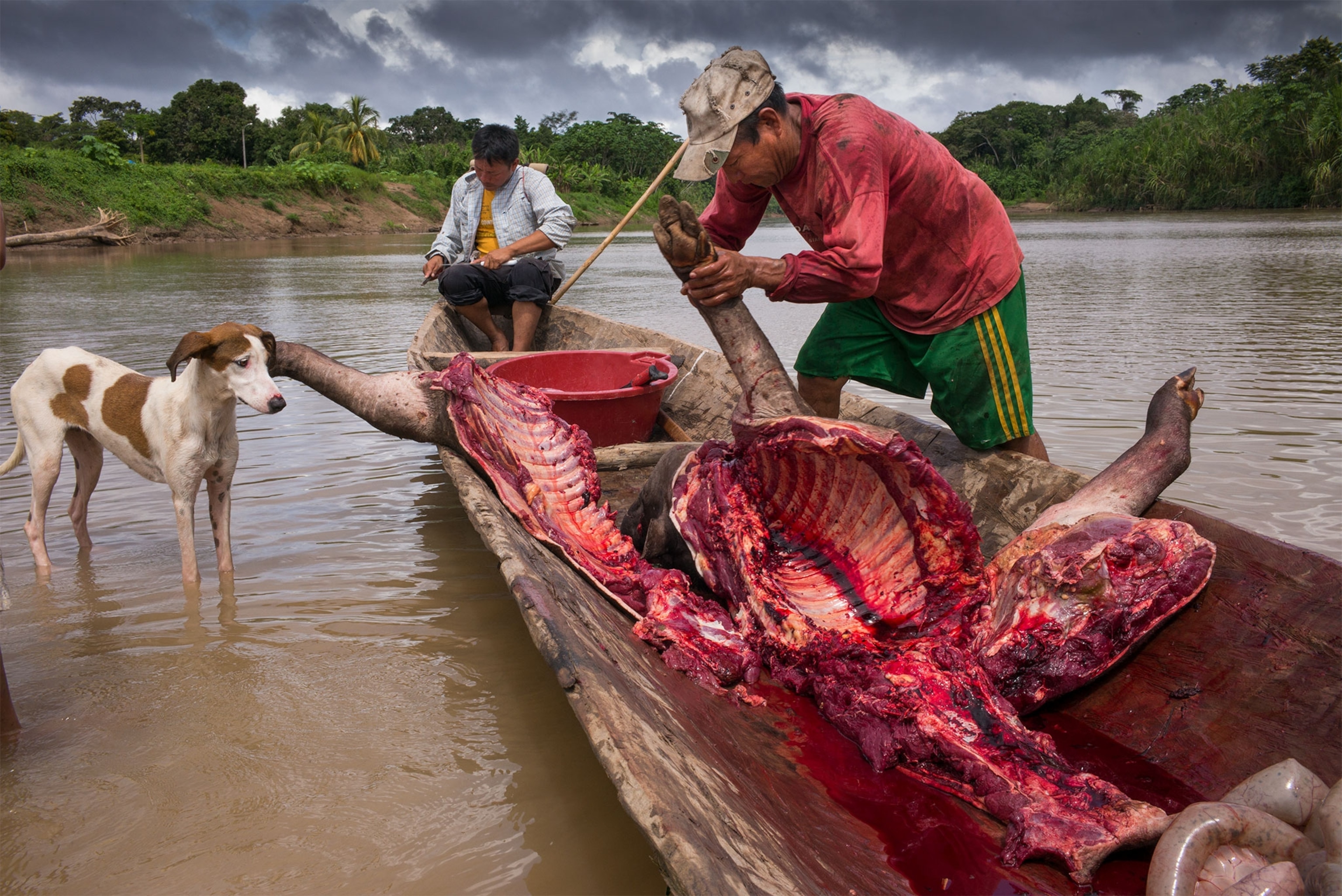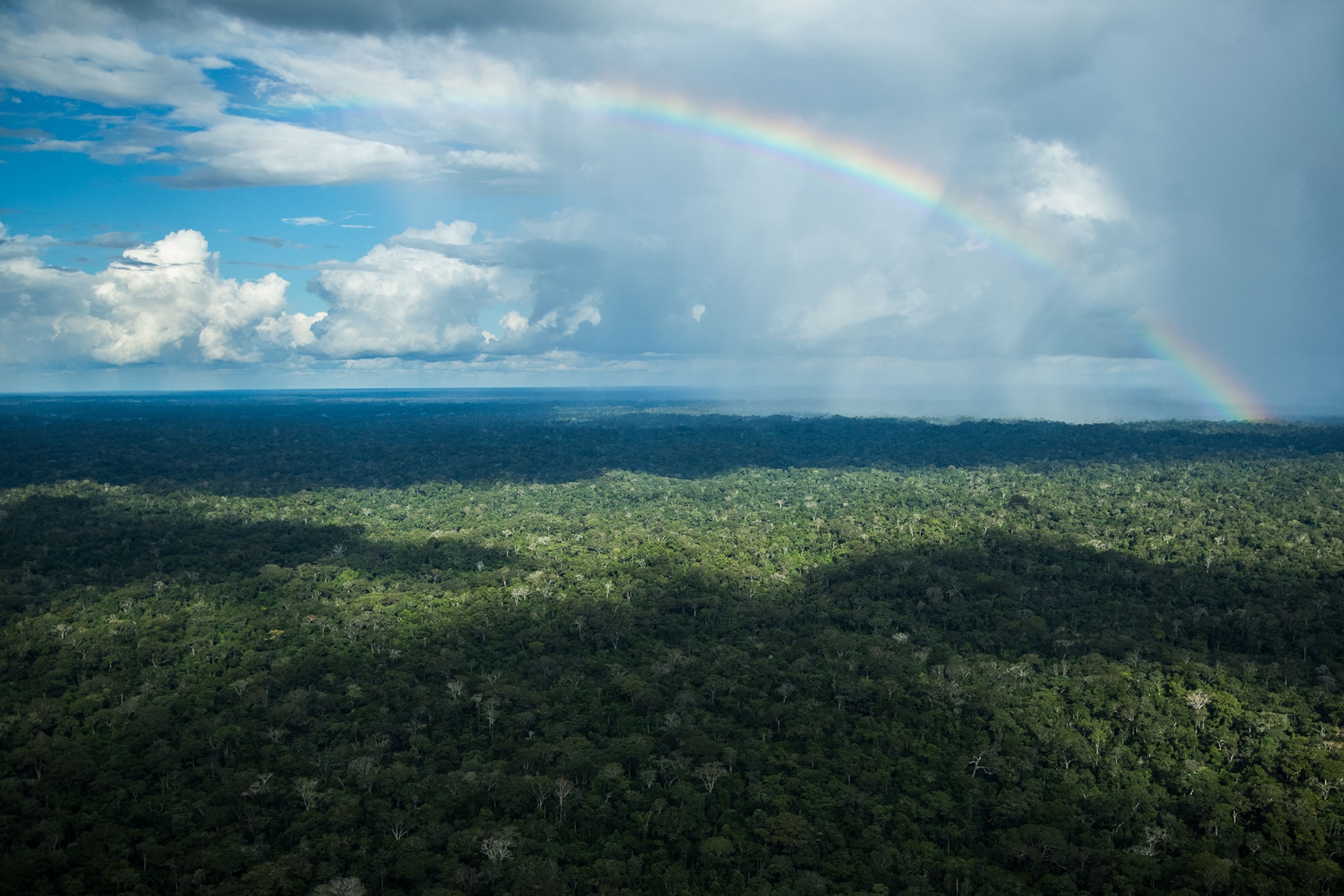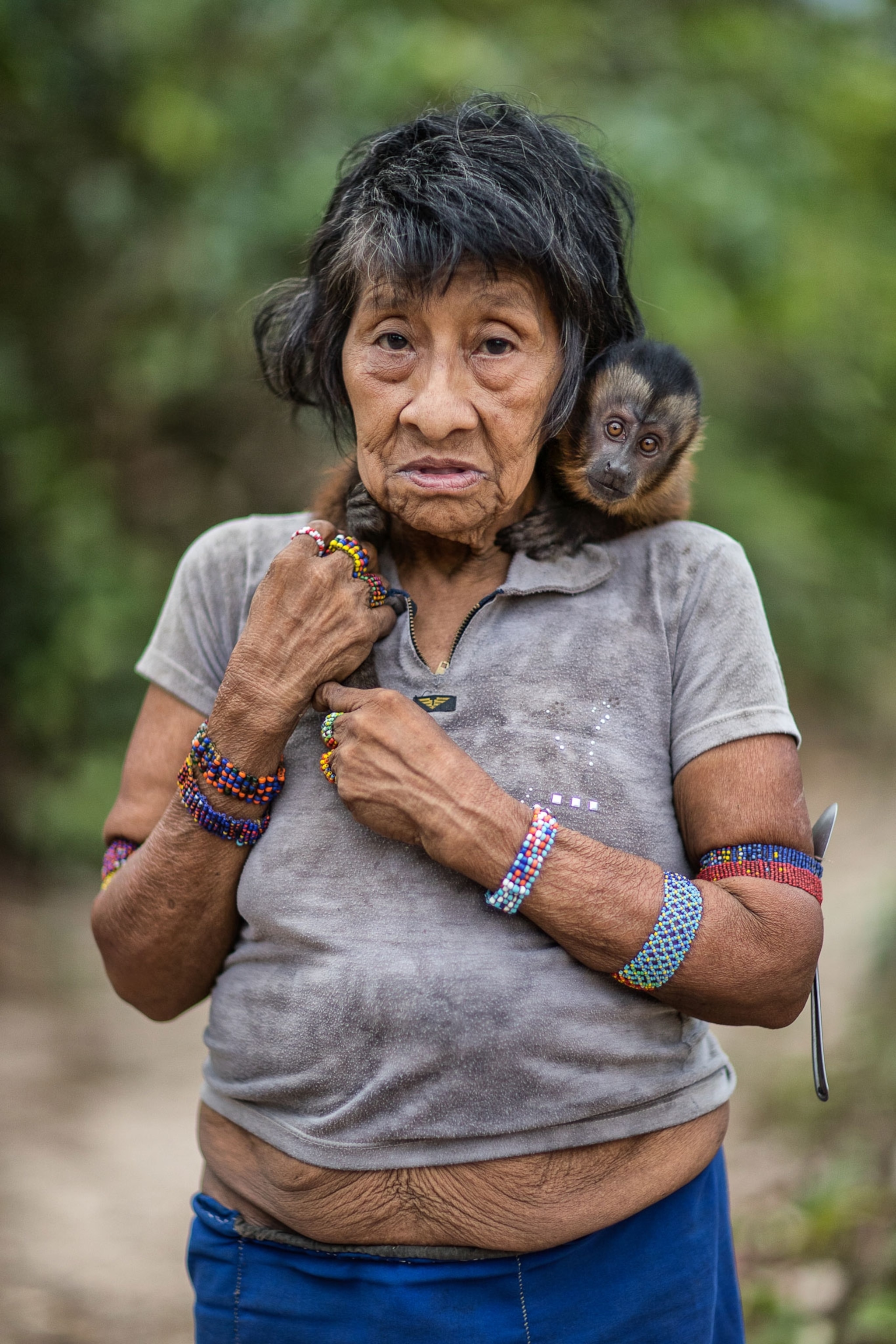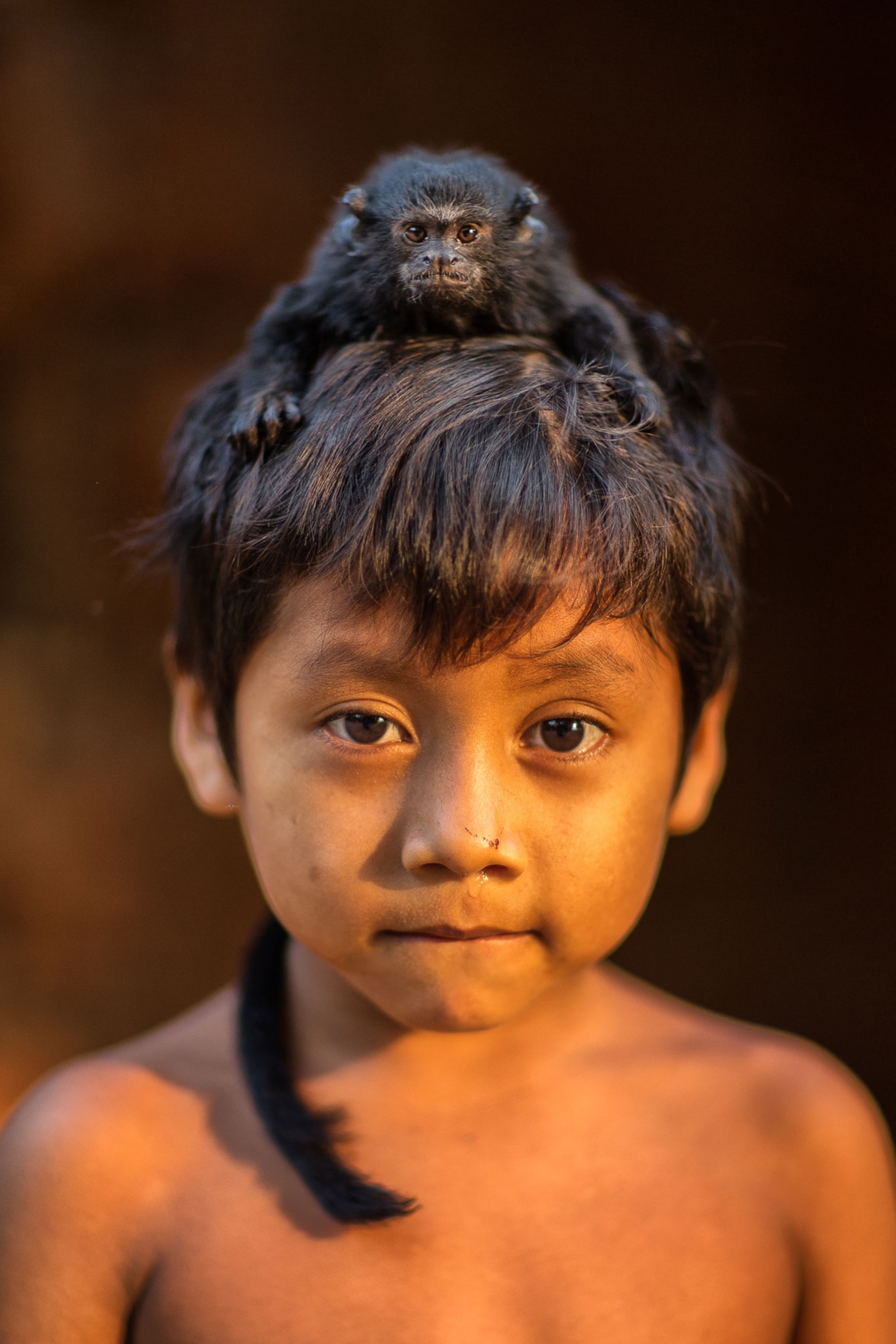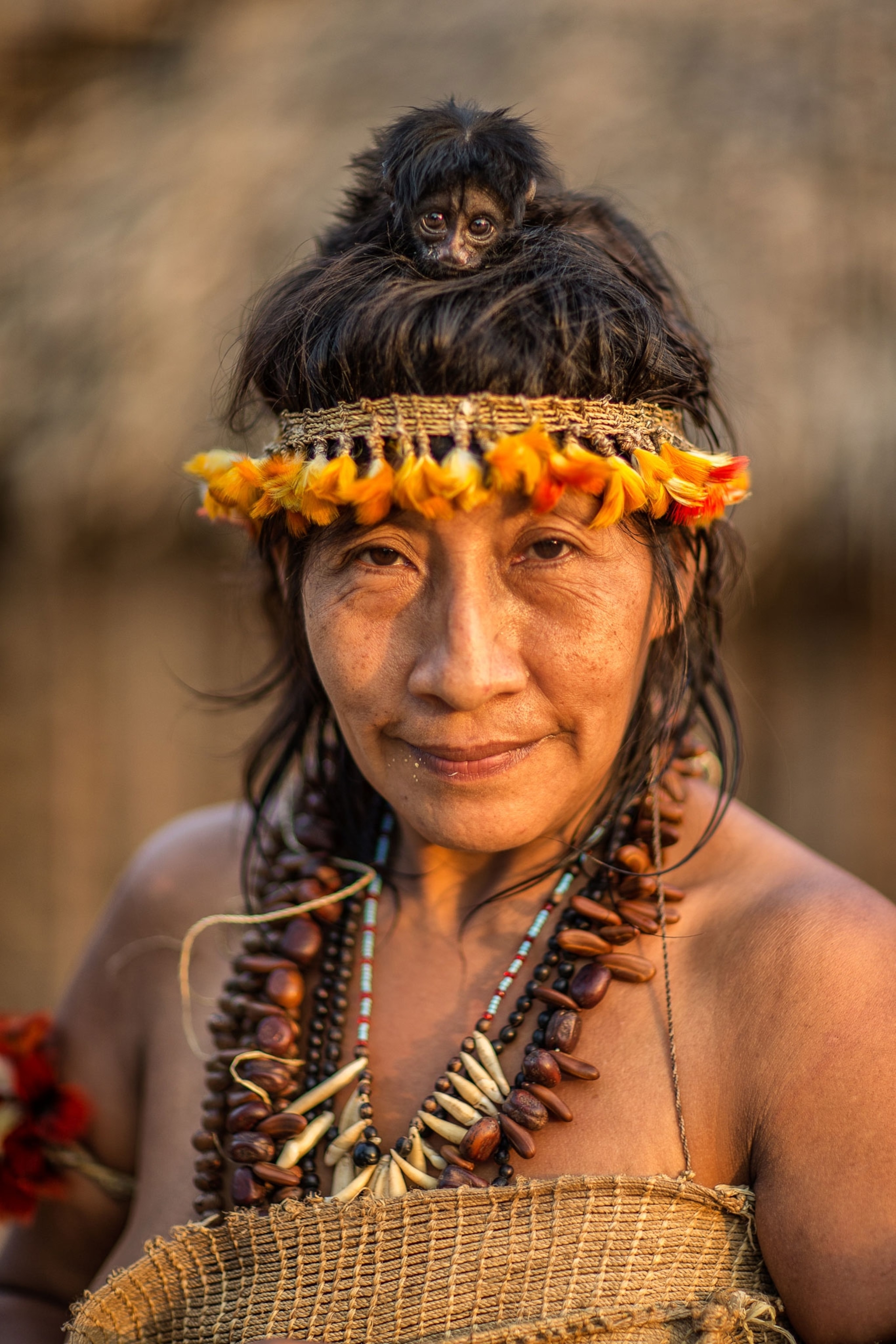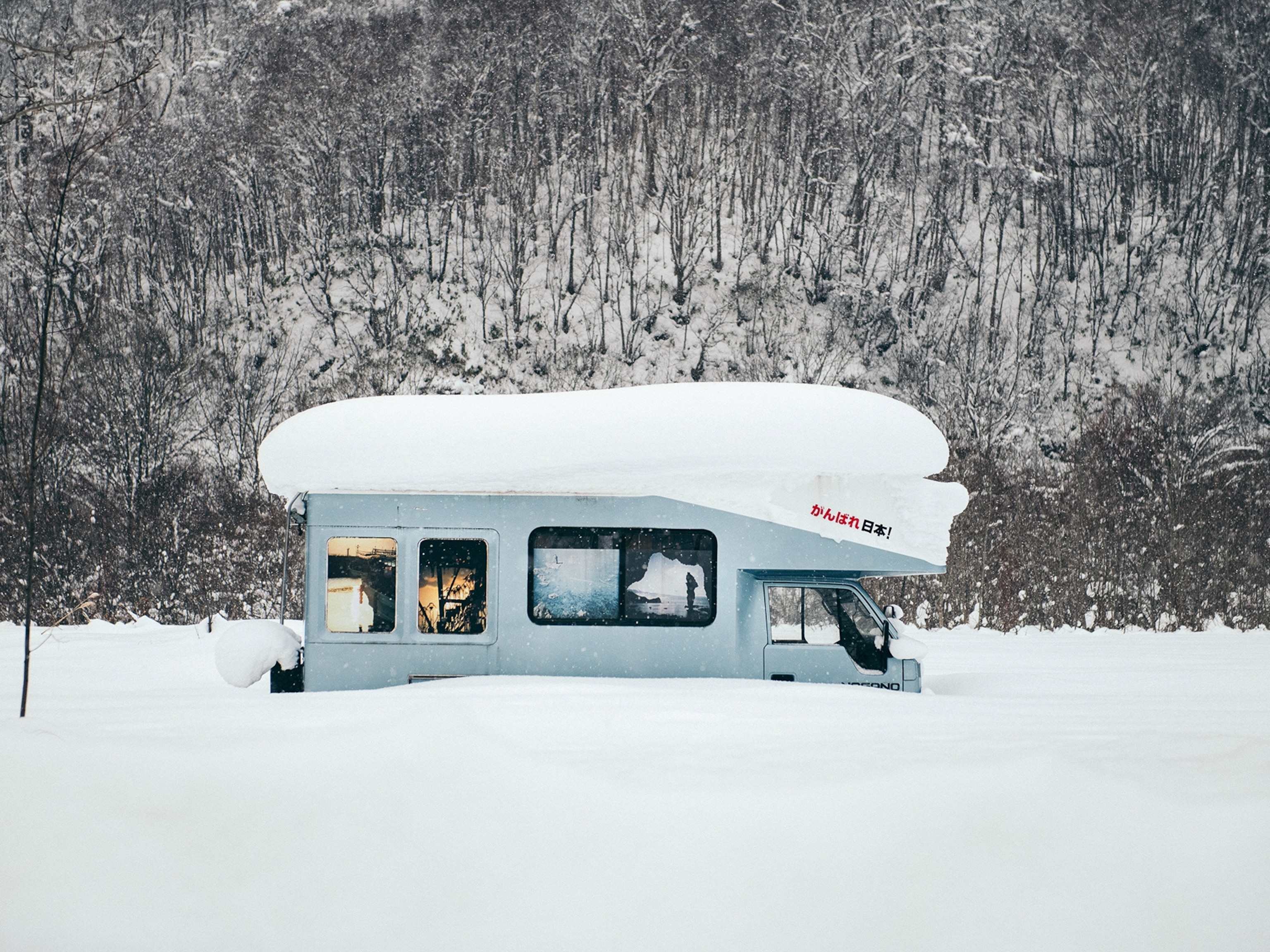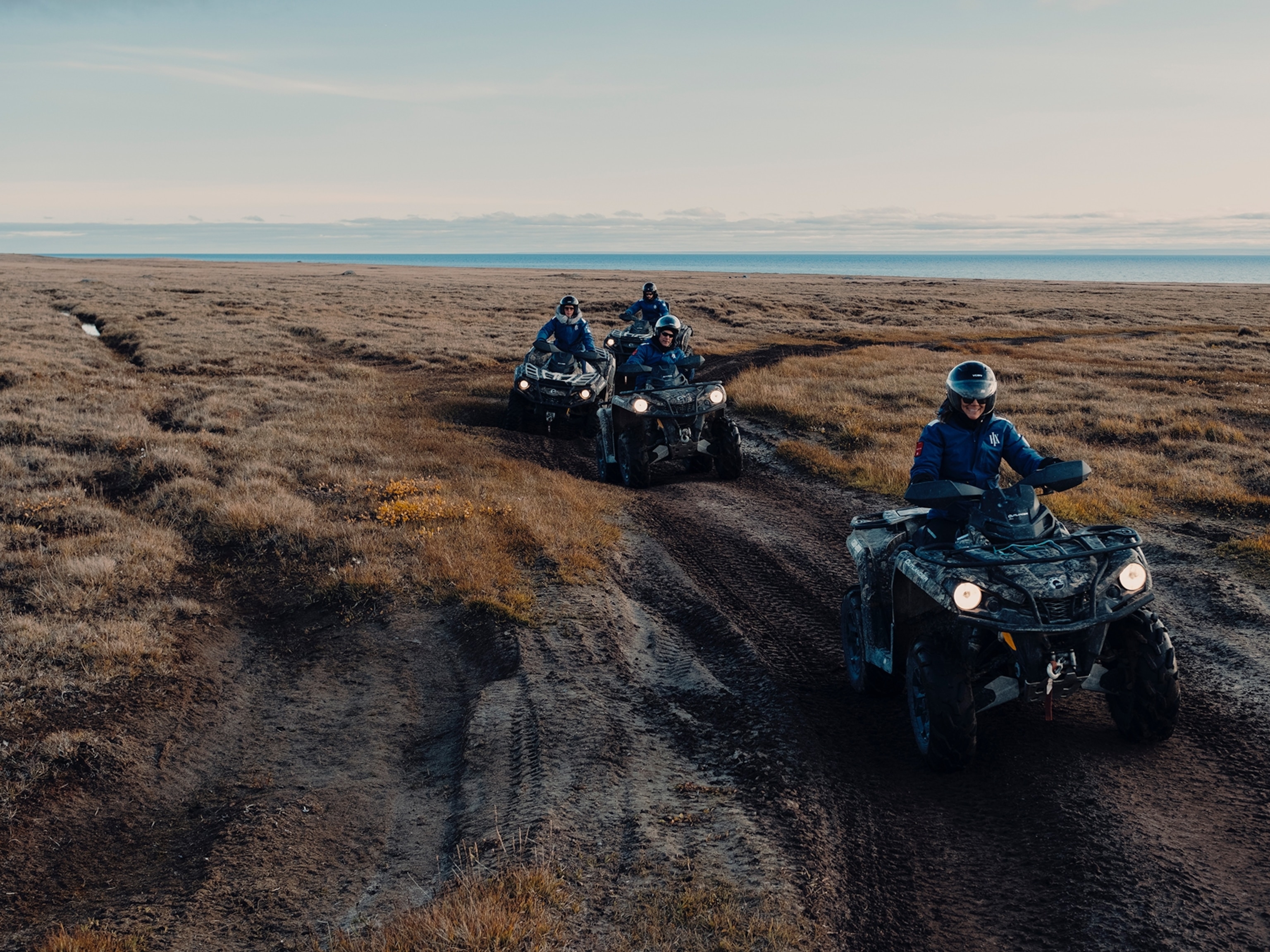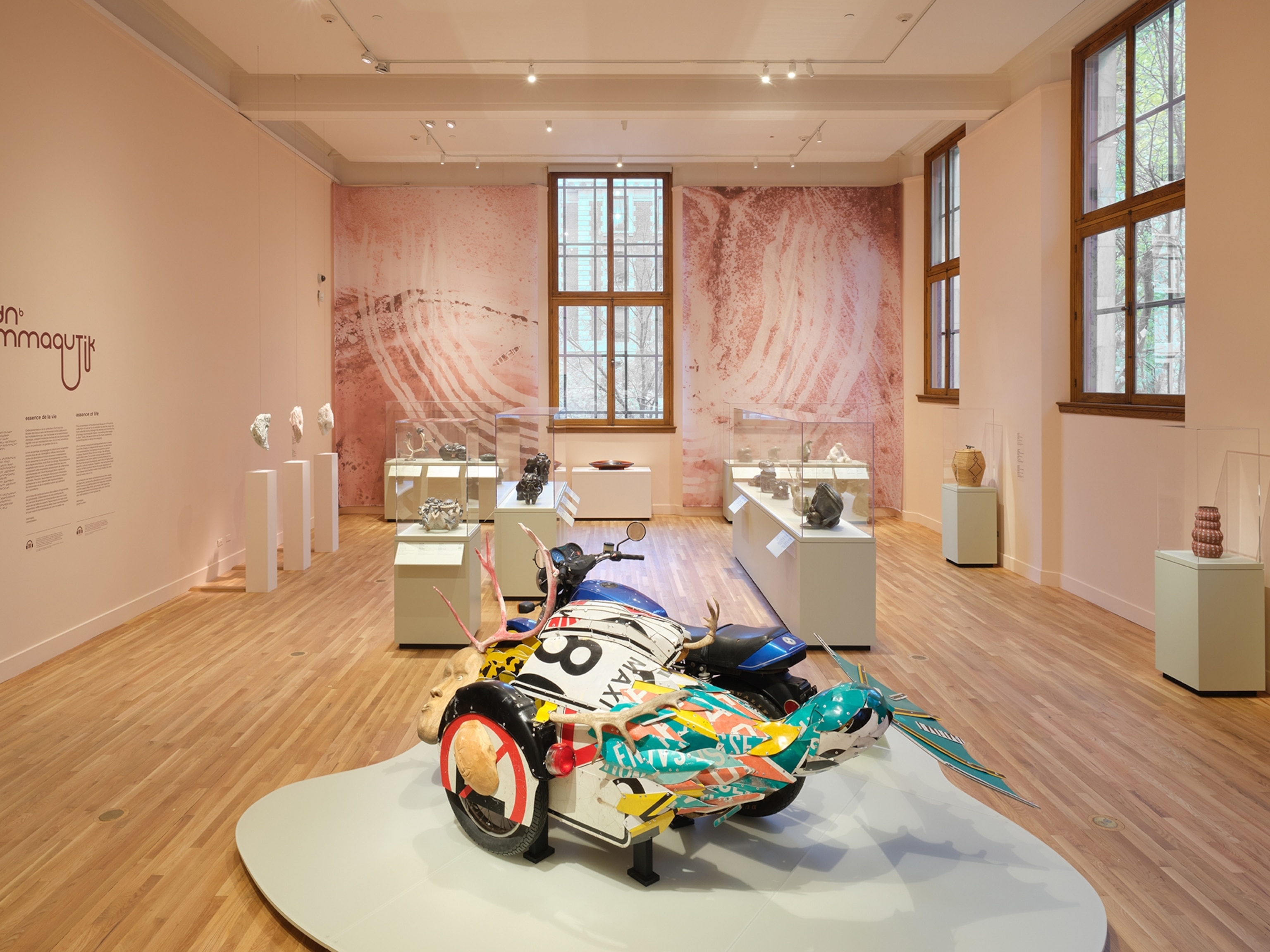Photographing Intimate Moments in Indigenous Amazonian Communities
With the threat of displacement looming, photographer Charlie Hamilton James set out to showcase daily life with these vulnerable groups.
When you think of a photojournalist tasked with painstakingly documenting an indigenous community’s most personal rituals, you might envision someone who can remain as inconspicuous as possible, blending into the woodwork as people go about their daily lives.
That person is not Charlie Hamilton James, the National Geographic photographer behind the October 2018 cover story.

Even if he wanted to, there’s no way Hamilton James could ever blend in among the Awá. Towering above them at six foot four, he knew he couldn’t fit in physically. “It’s not just a white guy walking in,” he laughs. “It’s a massive great white guy walking in.”
Blending in was impossible, so he focused on something more important—making friends. His ally? A smartphone. With the help of a silly app, he soon had the children in stitches. “They don’t have the barriers that adults do,” he says. Soon, the adults were laughing, too, and Hamilton James knew he was welcome.
As a wildlife photographer turned documentarian of indigenous life, Hamilton James is well aware of the potential pitfalls of his profession. “It’s an ethical minefield in many ways,” he says. “We go in with a bias, whether we know it or not.”
So, instead of emphasizing the differences between the Awá and his audience, Hamilton James looked for similarities. “If you go into these places with the idea that people are more similar to us than different, it makes them more accessible to the reading viewer,” he says. “Then we can empathize with them. We realize that their problems are similar to our problems.”
Hamilton James’ time with the Awá wasn’t his first stint in the region. Over the years, his work has taken him back to the Amazon again and again.

“It’s amazing, but it’s not a very pleasant place to work,” he admits. Heat, bugs, and an assortment of unwanted souvenirs from Amazonian insects (think: a botfly infestation and a flesh-eating disease) have historically made Hamilton James’ job, well, complicated. “I ended up having a love-hate relationship with it,” he explains. “I couldn’t leave it alone, but I didn’t really want to go there.”
Despite his reservations, Hamilton James keeps pitching stories about the region. “You can’t understand or care about the forest without understanding the people who have historically lived in it,” he says.
Hamilton James is all too aware of the challenges the Awá face—forces that are literally encroaching on the ever-tinier forest island the villagers inhabit. “Look, they’re going to run out of food eventually,” he says. “There is no land to expand any more. In one bad year, they lost a third of their forest to fire. It’s pretty desperate.”
But when the Awá take to the river for their morning bath, that desperation is nowhere to be found. They use the time to relax, soak, and plan their upcoming day. When Hamilton James saw them bathing their pet tortoises, he was charmed. “It was the most photogenic and beautiful thing,” he recalls. “To be able to just stand there and photograph it without anyone minding was just beautiful.” By capturing the peace and beauty of those relaxed moments, Hamilton James hopes to highlight the humanity and happiness of indigenous Amazonians. (Read more: Meet the People Who Live Inside This Eden-Like Park)
The photographer’s time with the Awá is just one of many factors that ties him closely to the region. In 2012, in an attempt to protect a portion of Peru’s Manu National Park from illegal loggers, Hamilton James bought 100 acres there, only to realize he’d purchased an illegal coca plantation. His attempts to understand vexing questions about poverty, conservation, indigenous communities, and deforestation in the Amazon—from living among illegal loggers to working as a shaman’s assistant—have only complicated his view of the region.
It has also revealed new personal truths. “I always thought people were the problem,” he says. “Now I love people.”
That love shines through his photos of the Awá, from relaxed shots of kids with their pet monkeys to glimpses of young Awá men who move between isolation and modernity, complete with smartphones.
“I don’t want to treat people as objects,” he says. “We ignore the poor people of the world at our peril.”


